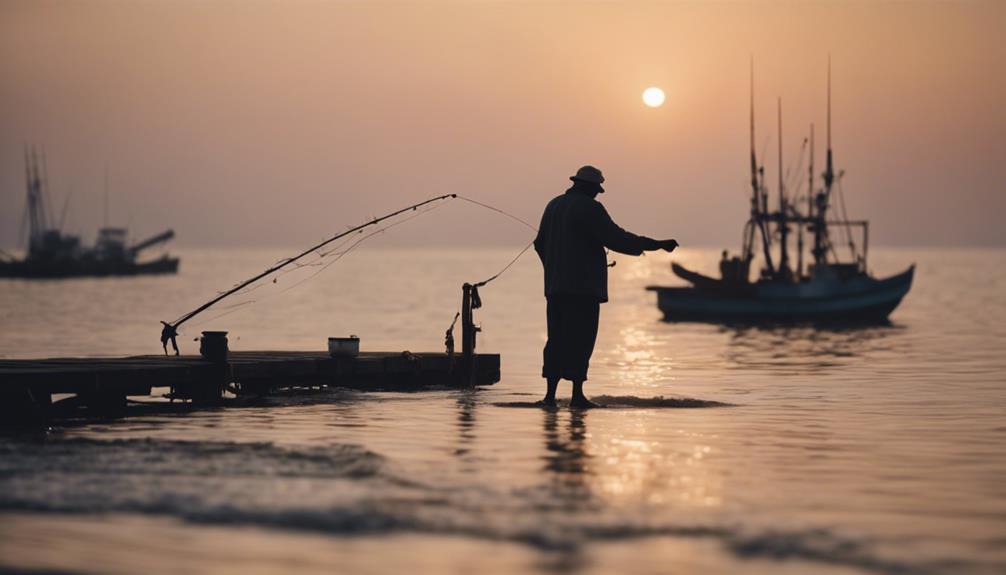When it comes to the world of fly fishing, one of the most critical pieces of equipment you’ll need is a fly fish rod. Selecting the right rod can significantly impact your fishing experience and success. In this comprehensive guide, we’ll explore everything you need to know about fly fish rods, including their types, materials, lengths, and how to choose the perfect one for your fishing adventures.
Understanding Fly Fish Rods: What Are They?
A fly fish rod is a specialized fishing rod designed for fly fishing, a technique that uses lightweight artificial flies as bait. Unlike traditional fishing methods that rely on heavier lures, fly fishing requires a unique rod that allows for delicate presentations and precise casting. Fly rods are typically longer and more flexible than conventional rods, making them ideal for casting lightweight flies over various distances. In this guide, we’ll delve deeper into the characteristics that make fly fish rods distinct and essential for any angler.
Types of Fly Fish Rods: Which One is Right for You?
When selecting a fly fish rod, it’s crucial to understand the different types available on the market. Generally, fly rods can be categorized into three main types: freshwater, saltwater, and switch or spey rods. Freshwater fly rods are designed for small to medium-sized fish in rivers and lakes, while saltwater rods are built to handle larger species in more challenging environments. Switch and spey rods are ideal for anglers who want to cast longer distances without the need for a backcast. Knowing the type of fishing you plan to do will help you choose the right fly fish rod that suits your needs.
Materials Matter: The Best Fly Rod Materials Explained
The material of a fly fish rod plays a significant role in its overall performance and durability. Fly rods are primarily made from graphite, fiberglass, or bamboo. Graphite rods are the most popular choice among anglers due to their lightweight nature and sensitivity, allowing for better feel and control when casting. Fiberglass rods are more forgiving and often recommended for beginners, as they provide a slower action that helps with casting accuracy. Bamboo rods, while less common, are known for their beauty and craftsmanship, making them a favorite among traditionalists. Depending on your fishing style and experience, the material of your fly fish rod can greatly influence your performance on the water.
Length and Action: Finding the Right Fit for Your Style
The length and action of a fly fish rod are crucial factors that affect casting distance and accuracy. Fly rods typically range from 6 to 10 feet, with longer rods providing greater casting distance and control. For smaller streams or tight spaces, a shorter rod may be more suitable, while larger rivers and open water may benefit from a longer rod. The action of a rod refers to its flexibility and responsiveness, which can be categorized as slow, medium, or fast. A slow-action rod bends throughout its length, making it ideal for delicate presentations. In contrast, fast-action rods bend only at the tip, providing more power for longer casts. Understanding the relationship between length and action is essential for selecting the perfect fly fish rod for your fishing style.
Weight Class: Matching Your Rod to Your Fly Line
When choosing a fly fish rod, it’s essential to consider its weight class, as this directly impacts your casting ability and the types of flies you can use. Fly rods are rated by weight, typically ranging from 1 to 12, with lower numbers suited for smaller fish and smaller flies, while higher numbers accommodate larger species and heavier flies. A well-matched fly rod and line will ensure optimal performance and prevent frustration while casting. For example, if you’re targeting trout in a small stream, a 4 or 5-weight rod may be ideal. However, if you’re aiming for larger species in saltwater, you might need an 8 or 10-weight rod. Always pay attention to the weight class when selecting your fly fish rod to enhance your fishing experience.
Budget-Friendly Options: Quality Fly Rods for Every Angler
While some fly fish rods can come with a hefty price tag, there are plenty of budget-friendly options that don’t compromise on quality. Many reputable brands offer mid-range rods that provide excellent performance without breaking the bank. When shopping for a budget fly fish rod, look for reputable manufacturers with positive reviews and warranties. Additionally, consider purchasing a combo package that includes the rod, reel, and line, which can often be more cost-effective for beginners. Investing in a quality fly rod at the right price can make all the difference in your fishing journey.
Maintenance Tips: Caring for Your Fly Fish Rod
Proper maintenance of your fly fish rod is essential to ensure its longevity and optimal performance. After each fishing trip, rinse your rod with fresh water to remove any salt, dirt, or debris that may have accumulated. Dry it thoroughly before storing it in a protective case to prevent damage. Regularly inspect the guides and reel seat for any signs of wear or corrosion, and replace components as necessary. Additionally, consider using a fly rod cover during transport to protect it from accidental damage. By following these simple maintenance tips, you can extend the life of your fly fish rod and ensure many successful fishing trips to come.
Conclusion: Elevate Your Fly Fishing Experience with the Right Rod
In conclusion, choosing the right fly fish rod is a vital step in enhancing your overall fly fishing experience. Understanding the various types of rods, materials, lengths, and actions will empower you to make an informed decision based on your fishing style and preferences. With proper care and maintenance, your fly fish rod can be a reliable companion for many fishing adventures. So, gear up, hit the water, and enjoy the thrill of fly fishing with the perfect rod tailored to your needs!
